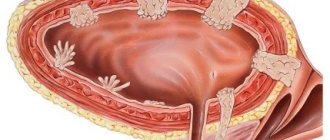General information about the disease
So, the topic of our conversation is lactic acidosis. What is it and how to treat it? This is a deviation in which hyperlactic acidemic coma is provoked. This complication is especially relevant for patients with diabetes. After all, the accumulation of lactic acid in the body (in the skin, brain, skeletal muscles, etc.) can further provoke the development of metabolic acidosis. Before you understand how to avoid such a complication, you should consider the most likely causes of its occurrence.
Treatment in hospital
Lactic acidosis is not diagnosed or treated at home (such attempts always end in the death of the patient).
The most important task of the doctor is to eliminate acidosis (acidity) of the tissues. This is achieved by introducing sodium bicarbonate (calculated using a special formula).
An important task is to normalize tissue acidity using sodium bicarbonate
Normalization of acidity is carried out under ECG control, the level of potassium and calcium, and venous pressure are analyzed. In addition to bicarbonate, methylene blue and trisamine (trioxymethylaminomethane) can be administered dropwise.
The patient is given small doses of insulin (to control blood glucose), this helps reduce the release of new portions of lactic acid into the tissue.
After reducing acidity, medications are prescribed to normalize blood circulation, incl. thrombolytics. Patients after an episode of lactic acidosis are prescribed a combination of acetylsalicylic acid with anticoagulants for life.
Of course, an episode of lactic acid coma indicates insufficient effectiveness of treatment of the underlying disease that caused this type of complication. For this reason, once the crisis is over, every effort must be made to treat diabetes, heart or kidney failure and other key factors.
Surviving an episode of milk coma is a great success for the patient. You need to use the life you have been given wisely, and do everything possible to prevent another episode of lactic acidosis (most likely, it will be the last).
An endocrinologist advises and manages patients with a tendency to lactic coma, and should be contacted immediately after determining an increased level of lactic acid in the tissues.
- Author: ovk802
Main causes
Lactic acidosis (symptoms and treatment of this disease will be discussed below) can occur due to such pathological conditions as:
- infectious and inflammatory diseases;
- severe physical injuries;
- renal failure;
- chronic alcoholism;
- acute myocardial infarction;
- massive bleeding;
- liver diseases.
Among other things, among the factors causing lactic acidosis, the intake of biguanides occupies a special place. Thus, hypoglycemic drugs, even in minimal doses, can easily provoke this complication, especially with damage to the liver or kidneys. It should also be noted that the pathology in question often occurs with hypoxia of skeletal muscles, which develops due to prolonged physical activity. In addition, the cause of this disease in some cases is leukemia and a number of other tumor processes. This also includes respiratory failure and thiamine deficiency in the body.
Causes of lactic acidosis
The risk of acute illness may be not only in diabetics, but also in those infected with leukemia, renal failure and alcoholism.
In diabetics, when lactic acidosis develops, the reasons may be:
- Lack of control in case of possible glucose deficiency, the disease can manifest itself without symptoms, which leads to further deterioration of the condition and, above all, coma;
- Taking full care of your health and taking biguanides, medications that lower blood sugar levels, may be taken incorrectly, resulting in a malfunction in the body and a milk coma occurs.
People infected with leukemia experience disruption of cellular metabolism. In renal failure, the accumulation of lactic acid in the cells progresses very quickly. The reason for this is hypoxia.
Large doses of alcohol-containing substances on a regular basis also contribute to the accumulation of acid. When processing alcohol, the body is not able to function quickly, resulting in a pathological process that leads to a coma.
There are additional reasons in connection with the manifestation of lactic acid deficiency:
- Serious illness (acquired human immunodeficiency syndrome, cancer, tumors, etc.).
- Hypoxia, heavy loads.
- Vitamin deficiency.
- Multiple organ failure (such as liver, kidney, heart, respiratory).
- Genetic burden (traced by the proband in the family).
- Septic conditions (sepsis, septic shock).
- Large doses of paracetamol and its derivatives.
- Blood neoplasia (lymphoma).
Lactic acidosis: symptoms of the disease
The pathology develops rapidly and covers the entire body in just a few hours. It should be especially noted that before the onset of the acute course of the disease, the patient usually does not experience any symptoms. Although there are some signs by which you can understand that there is excess lactic acid in the blood. These signs include:
- muscle pain;
- apathy;
- chest pain;
- rapid breathing;
- insomnia or, conversely, drowsiness.
In addition, the main symptom of this pathological condition can be called cardiovascular failure. After all, this particular disease is complicated due to increased acidity.
Signs of lactic acidosis appear more intensely as the disease progresses. In this case, the patient may feel a feeling of nausea. After some time, patients experience vomiting, which is gradually accompanied by severe abdominal pain. If a person does not receive help at this stage, his condition worsens significantly. In such a situation, the patient ceases to perceive reality. He begins to react very slowly to the actions of the people around him. Sometimes the patient experiences involuntary contractions of various muscles, resulting in convulsions, and then the patient’s motor ability is noticeably weakened.
A harbinger of hyperlactic acidemic coma is intermittent breathing. In this case, no foreign odors are observed (for example, as with ketoacidosis). After which the person simply loses consciousness.
Lactic acidosis in type 2 diabetes mellitus: symptoms and treatment of a dangerous complication
If the excretory function of the kidneys is impaired, breakdown products accumulate in the body, tests show an increased concentration of lactic acid. Against the background of provoking factors, in rare cases, lactic acidosis develops in type 2 diabetes mellitus. A dangerous condition in the absence of timely assistance can end disastrously for the patient.
A diabetic and the patient's relatives should know the main signs of lactic acidosis and the factors that provoke the development of acidotic coma. Basic information about a severe complication of diabetes, first aid and treatment methods for lactic acidosis are described in the article.
What it is
In diabetes mellitus, insulin resistance provokes disruption of the functioning of organs and systems. Against the background of metabolic pathology, renal failure often develops. If the kidneys cannot cope with the load, then harmful substances and toxins accumulate in the body.
When diabetes is poorly compensated, self-destruction of glucose in the blood occurs, and excess lactic acid appears, which accumulates in the body when the processing and excretory function of the kidneys is impaired. Oversaturation of blood with lactate provokes blood acidity levels at 7.3.
Lactic acid negatively affects the supply of oxygen to organs and tissues. With hypoxia, acidosis develops, insulin activity decreases sharply, and lactate levels increase. The more depleted the pancreatic cells are, the more severe the consequences of lactic acidosis.
Doctors confirm a complication of diabetes when the concentration of lactic acid is 4 mmol/l or more. It is enough to compare the values with the optimal indicators to see the difference: arterial blood up to 1.6 mmol/l, venous blood no higher than 2.2 mmol. Lactic acidosis, if untreated, provokes the development of lactic acidotic coma and death.
How to get rid of acetone in urine if you have diabetes? Read useful information.
The list of drugs with antiandrogenic effect for women and the features of their use are described on this page.
Reasons for development
A dangerous complication develops in a small percentage of the total number of diabetics under the influence of provoking factors. One of the reasons for the violation of the use of antidiabetic compounds is a sharp drop in glucose levels. Drugs of the biguanide group must be taken strictly according to the schedule, with periodic dosage adjustments as directed by the endocrinologist.
Names:
- Bagomet,
- Gliformin,
- Metformin,
- NovoFormin,
- Metadiene,
- Siofor.
In case of renal failure or severe diseases of the excretory system, biguanides are not prescribed.
Other causes of lactic acidosis due to non-insulin-dependent diabetes mellitus:
- infectious and inflammatory diseases,
- administration of high concentrations of glucose intravenously,
- hereditary diseases that provoke metabolic disorders,
- decompensated diabetes mellitus, difficult to control with medications, in combination with complications of various types,
- severe anemia,
- deficiency of B vitamins,
- alcohol intoxication,
- active blood loss,
- long-term use of drugs based on salicylic acid, cyanide poisoning,
- suffered a stroke or heart attack.
Signs and symptoms
A complex of negative symptoms with lactic acidosis manifests itself over several hours. When the first symptoms of lactic acidosis appear, the patient needs urgent hospitalization.
The initial stage of development of a dangerous complication signs:
- nausea, vomiting,
- Strong headache,
- myalgia (pain in muscle tissue),
- dizziness, loss of consciousness,
- breathing becomes louder, faster,
- coordination of movements is impaired,
- the person complains of drowsiness or develops insomnia,
- discomfort in the abdominal area.
In the absence of treatment, the level of lactate in the body increases, and oxygen starvation of brain tissues and cells develops. Paresis and impaired physiological reflexes are added to the listed symptoms.
The next, most dangerous stage is lactic acidotic coma. During this period, not all patients can be saved: successful therapy is possible in no more than half of the cases.
Specific signs before the development of a life-threatening condition:
- dryness of mucous membranes and epidermis,
- Kussmaul's breath,
- temperature drop to 35.5 degrees and below,
- general weakness,
- significant deterioration in general condition,
- facial features become sharper,
- no urine output,
- eyeballs sunken,
- loss of consciousness,
- development of intravascular coagulation, formation of a large number of blood clots (DIC syndrome).
Possible consequences
The lack of timely and competent assistance with the development of lactic acidosis provokes the development of diabetic coma. The serious condition is a consequence of active intoxication against the background of stagnation of decay products, high concentrations of lactic acid and dehydration of the body.
The negative impact of pathological processes is enhanced by disturbances in protein metabolism and increased levels of ammonia and urea. The consequence is an increase in the concentration of harmful components in the blood and urine, the development of oxygen starvation of the brain.
The phenomena of hypoxia are fraught with dangerous complications:
- vascular collapse,
- frequent, shallow breathing,
- increased blood clotting,
- disorder of higher nervous activity,
- decreased muscle tone.
Important! The consequence of dangerous processes is the impossibility of the correct course of physiological reactions, which leads to death. It is no coincidence that doctors advise that at the first signs of lactic acidosis, call an ambulance for immediate hospitalization, intensive restoration of basic body functions and detoxification.
General rules and methods of treatment
If a complication of type 2 diabetes develops, urgent medical attention is needed. It is not always possible to predict the development of severe complications of diabetes. The patient’s life depends on the awareness of loved ones who were nearby at the time of increasing signs of lactic acidosis and the qualifications of the doctors providing assistance.
First, you need to eliminate hypoxia and manifestations of acidosis, stabilize the main life support systems. It is important to bring the patient out of shock and ventilate the lungs. If a diabetic is unconscious, then urgent intubation is needed to supply oxygen to the cells of the body.
Doctors eliminate excess blood acidity and neutralize the negative effects of excess lactic acid using a solution of sodium bicarbonate. The procedures are carried out daily until the main indicators in the body are stabilized. In one day, the patient receives no more than two liters of an alkaline solution.
Additionally, short-acting insulin with glucose, cardiotonics and vasotonics are prescribed to normalize the functions of the heart and vascular system. During treatment, blood tests are needed to assess potassium concentration and blood pH.
Learn about the prevention of diabetes in children and adults, and also read useful recommendations from experts.
The rules and features of following a diet for thyroid hypothyroidism are described in this article.
Go to https://fr-dc.ru/hormones/testosteron/kak-ponizit-u-zhenshin.html and read information about the causes of increased testosterone in women, as well as how to lower the hormone level in natural ways.
The next stage of detoxification therapy:
- intravenous administration of carboxylase,
- correction of insulin therapy,
- administration of blood plasma,
- To eliminate DIC syndrome, small doses of heparin are prescribed,
- administration of rheopolyglucin.
After stabilization of the condition and normalization of vital signs, the patient is in the hospital.
Be sure to adhere to a diet, monitor the dynamics of glucose concentrations and blood acidity levels, and measure blood pressure.
Upon returning home, you must follow the endocrinologist’s prescriptions, take hypoglycemic medications with caution, and always use a traditional or non-invasive glucometer.
Preventive recommendations
Lactic acidosis can develop due to improper treatment of diabetes mellitus with the use of drugs from the biguanide group. A sharp decrease in glucose levels in combination with renal failure leads to congestion, excess lactic acid, and intoxication of the body.
To prevent lactic acidosis, you need to take biguanides strictly according to the instructions, adjust the dose as prescribed by your doctor, and refrain from independently changing the daily intake.
When prescribing drugs, it is necessary to conduct a thorough examination of all organs and systems in order to exclude severe pathologies of the urinary system.
If you have renal failure, you need to select drugs from a different group to control glucose levels.
Be sure to measure your blood sugar 57 times throughout the day to promptly identify the risk of hypoglycemia.
The likelihood of lactic acidosis is increased with improper treatment of diabetes mellitus and lack of daily monitoring of glucose levels.
Failure to follow the rules of therapy, reluctance to use a glucometer, or adhere to a diet can lead to a sharp drop in sugar levels and the development of hypoglycemia.
Important points:
- If you miss the next dose of a glucose-lowering drug, you cannot take two tablets instead of one the next time: hypoglycemia may develop,
- If a bacterial or viral infection develops, you should immediately consult your doctor for adequate therapy. It is not always possible to predict the reaction of a weakened body and damaged pancreas to an antibiotic or antiviral drug. During therapy, bed rest and medical supervision are needed to promptly identify the risk of lactic acidosis and other negative processes.
With a latent course of endocrine pathology with mild symptoms, the development of a severe complication can be missed. Doctors advise people to study more information if relatives of older generations are diagnosed with diabetes. It is important to know how lactic acidosis develops in type 2 diabetes mellitus and what factors provoke a dangerous complication.
Lactic acidosis in diabetes mellitus develops instantly. A mild onset of the pathological condition can turn into a severe form with acute symptoms within a few hours. Find out how to prevent dangerous complications from the following video:
Diagnostics
We dealt with the question posed at the beginning of the article: “Lactic acidosis - what is it?”, We examined the signs of this deviation. Now we need to talk about how to act in such a situation. If your loved one exhibits at least a few of the above symptoms, you should immediately call a doctor. It is far from certain that the patient has lactic acidosis. After all, such signs may indicate other whitening. To make a correct diagnosis, it is necessary to do a general blood test. If an increased content of lactic acid is found in it, as well as decreased levels of bicarbonates and reserve alkalinity, then it makes sense to talk about lactic acidosis.
Lactic acidosis: what is it and what are its symptoms?
Some changes in the body are irreversible and require immediate diagnosis and medical attention. For example, not everyone knows what lactic acidosis is, but doctors characterize this condition as “critically severe.”
So, if the doctor, based on the results of laboratory tests, has made a final diagnosis of “Lactic acidosis,” what is it, and how to deal with this pathological process in the body? A typical diagnosis indicates that a high concentration of lactic acid predominates in the patient’s blood, which is fraught with a high mortality rate for patients.
The same applies to other diseases that precede an exacerbation of lactic acidosis. The patient should discuss this issue with the attending physician, otherwise the risk of mortality and coma increases. There is no specific prevention, as such, but it is very important to regularly monitor the characteristics of the blood test.
Advice! If alarming symptoms appear, it is recommended to immediately contact an endocrinologist, since it is this highly specialized specialist who deals with this kind of organic lesions. After this, it is important to register with a dispensary and adhere to all preventive standards in order to avoid exacerbation of the main diagnosis.
The entry of uric acid into body fluids is fraught with fatal consequences, therefore, after ascertaining this fact, you must immediately agree to hospitalization for high-quality and adequate treatment. With a timely response, there are very real chances to save the victim, but he will have to remain under medical supervision for a long time and be on pills.
Lactic acidosis: treatment of the disease
With this disease, therapy should be aimed at promptly eliminating hypoxia and acidosis. Emergency care involves intravenous administration (drip) of sodium bicarbonate solution (4 or 2.5%) in a volume of up to two liters per day. In this case, doctors must keep the pH and potassium levels in the blood under strict control. In addition, intensive insulin therapy or monocomponent insulin therapy is mandatory for lactic acidosis. As additional drugs, doctors use carboxylase intravenously (drip) in the amount of 200 mg per day. It is also relevant to administer rheopolyglucin, blood plasma, as well as small doses of heparin, which help correct hemostasis.
Medical news
14.01.2020
At a working meeting in the government of St. Petersburg, it was decided to more actively develop the HIV prevention program. One of the points is: testing for HIV infection up to 24% of the population in 2020.
14.11.2019
Experts agree that it is necessary to attract public attention to the problems of cardiovascular diseases. Some are rare, progressive and difficult to diagnose. These include, for example, transthyretin amyloid cardiomyopathy
14.10.2019
On October 12, 13 and 14, Russia is hosting a large-scale social event for free blood clotting testing - “INR Day”. The campaign is timed to coincide with World Thrombosis Day.
07.05.2019
The incidence of meningococcal infection in the Russian Federation in 2020 (compared to 2020) increased by 10% (1). One of the common ways to prevent infectious diseases is vaccination. Modern conjugate vaccines are aimed at preventing the occurrence of meningococcal infection and meningococcal meningitis in children (even very young children), adolescents and adults.
Almost 5% of all malignant tumors are sarcomas. They are highly aggressive, rapidly spread hematogenously, and are prone to relapse after treatment. Some sarcomas develop for years without showing any signs...
Viruses not only float in the air, but can also land on handrails, seats and other surfaces, while remaining active. Therefore, when traveling or in public places, it is advisable not only to exclude communication with other people, but also to avoid...
Getting good vision back and saying goodbye to glasses and contact lenses forever is the dream of many people. Now it can be made a reality quickly and safely. The completely non-contact Femto-LASIK technique opens up new possibilities for laser vision correction.
Acidosis is a condition characterized by an increase in acidity and a decrease in blood pH to less than 7.35 (normal blood pH is 7.35-7.38).
In other words, this is a violation of the acid-base balance of the body, in which organic acids contained in the tissues and blood are either not eliminated quickly enough or are produced in excess.
Disease prevention
Well, the answer to the question: “Lactic acidosis – what is it?” you know. How to prevent such troubles? Preventive measures that prevent the onset of hyperlactic acidemic coma include preventing hypoxia conditions and controlling diabetes compensation. Lactic acidosis resulting from the use of biguanides requires special rigor in individual determination of drug dosages.
Most often, this disease is detected in those patients who did not know they had diabetes, and as a result, the disease proceeded without the necessary treatment. To prevent the occurrence of lactic acidosis, you should strictly follow all the instructions of your doctor. It is also necessary to monitor the dynamics of the development of the disease, regularly undergo a full medical examination, take all tests and take proper therapy. If you suspect lactic acidosis, you should immediately contact an endocrinologist. This is the only way you can avoid negative consequences and get rid of the unpleasant symptoms that accompany this disease.











